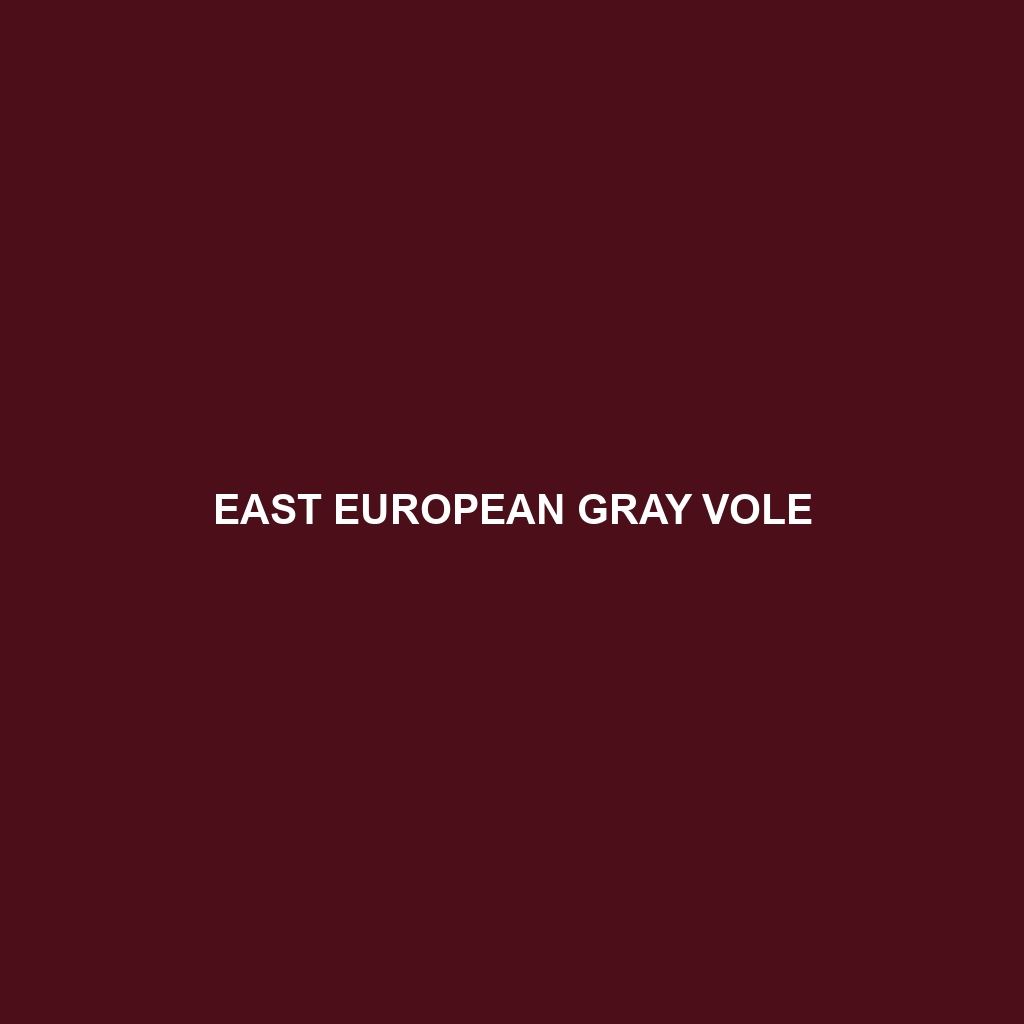East European Gray Vole
Common Name: East European Gray Vole
Scientific Name: Microtus rufocanus
Habitat
The East European Gray Vole is predominantly found in the temperate regions of Eastern and Central Europe, including countries such as Romania, Poland, and Ukraine. This species thrives in various habitats, particularly grasslands, meadows, and wetland areas, where it can easily access vegetation and shelter. The vole prefers areas with abundant cover, such as dense grasses and sedges, which provide protection from predators.
Physical Characteristics
East European Gray Voles have a medium to large size compared to other voles, typically measuring between 8 to 10 inches (20 to 25 cm) in length. They possess a stocky body, short legs, and a relatively short tail. Their fur is generally soft and dense, with a characteristic grayish-brown coloration on the dorsal side and lighter tones on the underside. Their rounded ears and small eyes give them a distinctive appearance, making them easily recognizable in their natural environment.
Behavior
This species is known for its social structure, often living in colonies. East European Gray Voles are mainly diurnal and exhibit a range of behaviors, including foraging for food, burrowing, and grooming. They are curious creatures, displaying investigative behavior when encountering new objects or threats in their habitat. Their ability to create complex tunnel systems is vital for their survival, as these tunnels offer protection from predators and harsh weather.
Diet
East European Gray Voles are herbivores, primarily feeding on a wide variety of vegetation, including grasses, seeds, roots, and leaves. They are known to be particular about their diets, often selecting high-fiber plants, which are essential for their digestive health. During the winter months, they display unique feeding habits by storing food in their burrows, ensuring they have sufficient nutrition during scarce periods.
Reproduction
The reproductive habits of the East European Gray Vole are quite prolific. Breeding typically occurs from late spring to early autumn, with females producing multiple litters each year. Each litter can consist of 3 to 8 offspring, which are born blind and hairless and become independent within a few weeks. Parental care is crucial during the early stages, and both parents may assist in nurturing and protecting the young.
Conservation Status
The East European Gray Vole is currently classified as Least Concern by the IUCN, indicating that it does not face immediate threats to its population. However, habitat destruction and changes in land use pose potential risks, making conservation efforts important for maintaining stable populations.
Interesting Facts
One fascinating fact about the East European Gray Vole is its exceptional adaptability to diverse environments, which has enabled it to thrive amidst agricultural areas. Additionally, these voles play a critical role in soil aeration and seed dispersal, further benefiting their ecosystems.
Role in Ecosystem
East European Gray Voles serve as a vital component in their ecosystem. As primary consumers, they support various predators, including birds of prey, foxes, and larger mammals. By contributing to seed dispersal and soil health through their burrowing activities, they help maintain the ecological balance of their habitats. Furthermore, their presence indicates a healthy environment, as their populations often reflect the overall health of grassland ecosystems.
